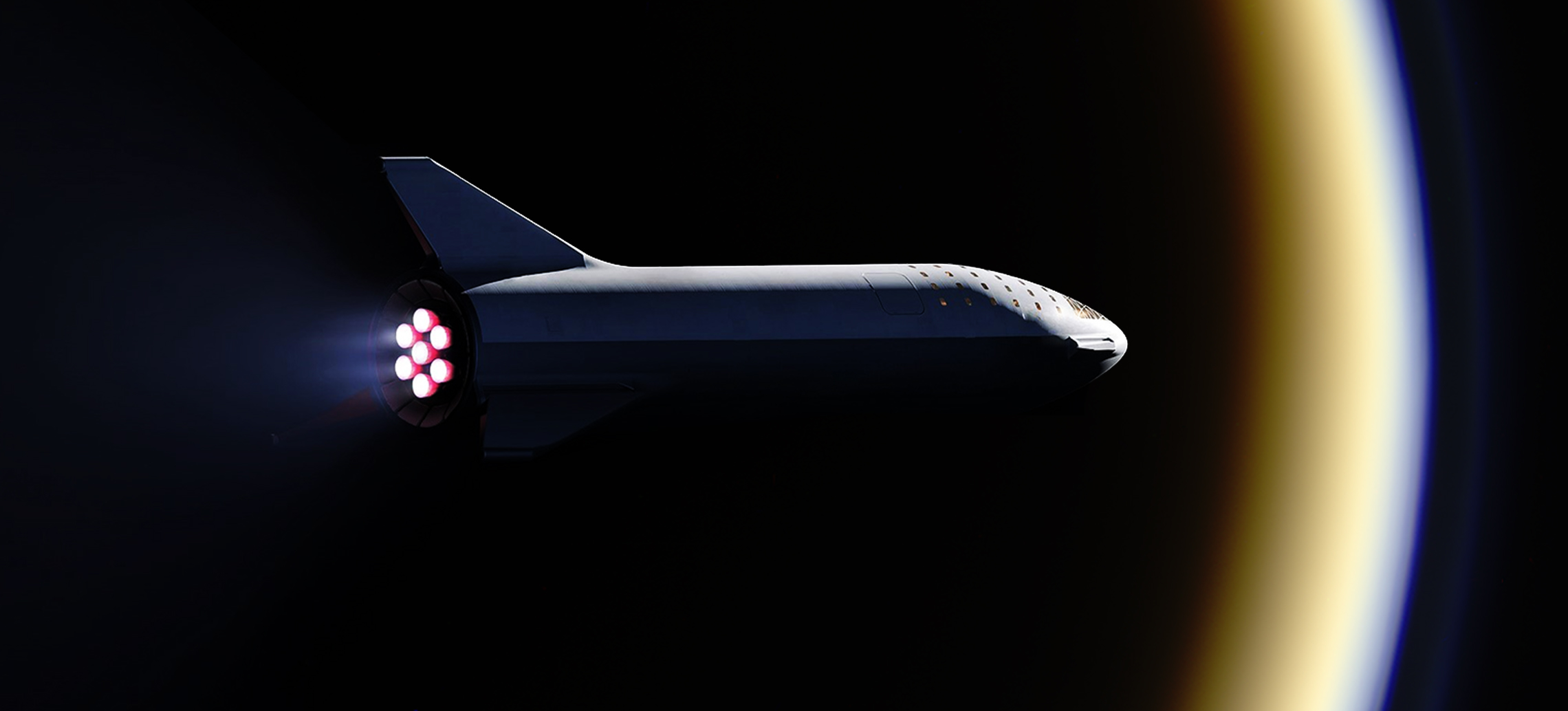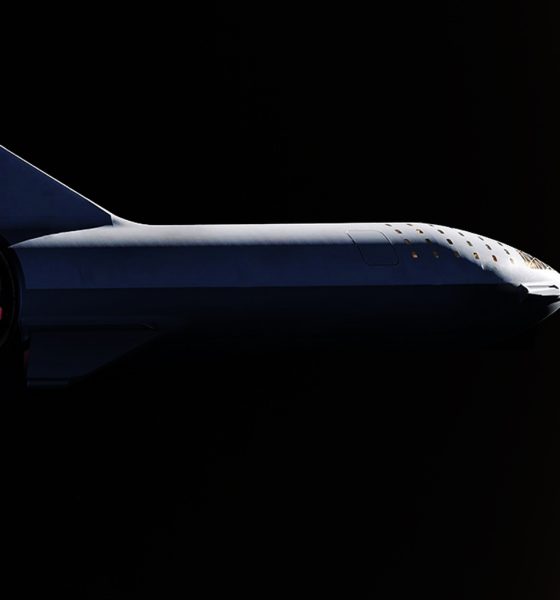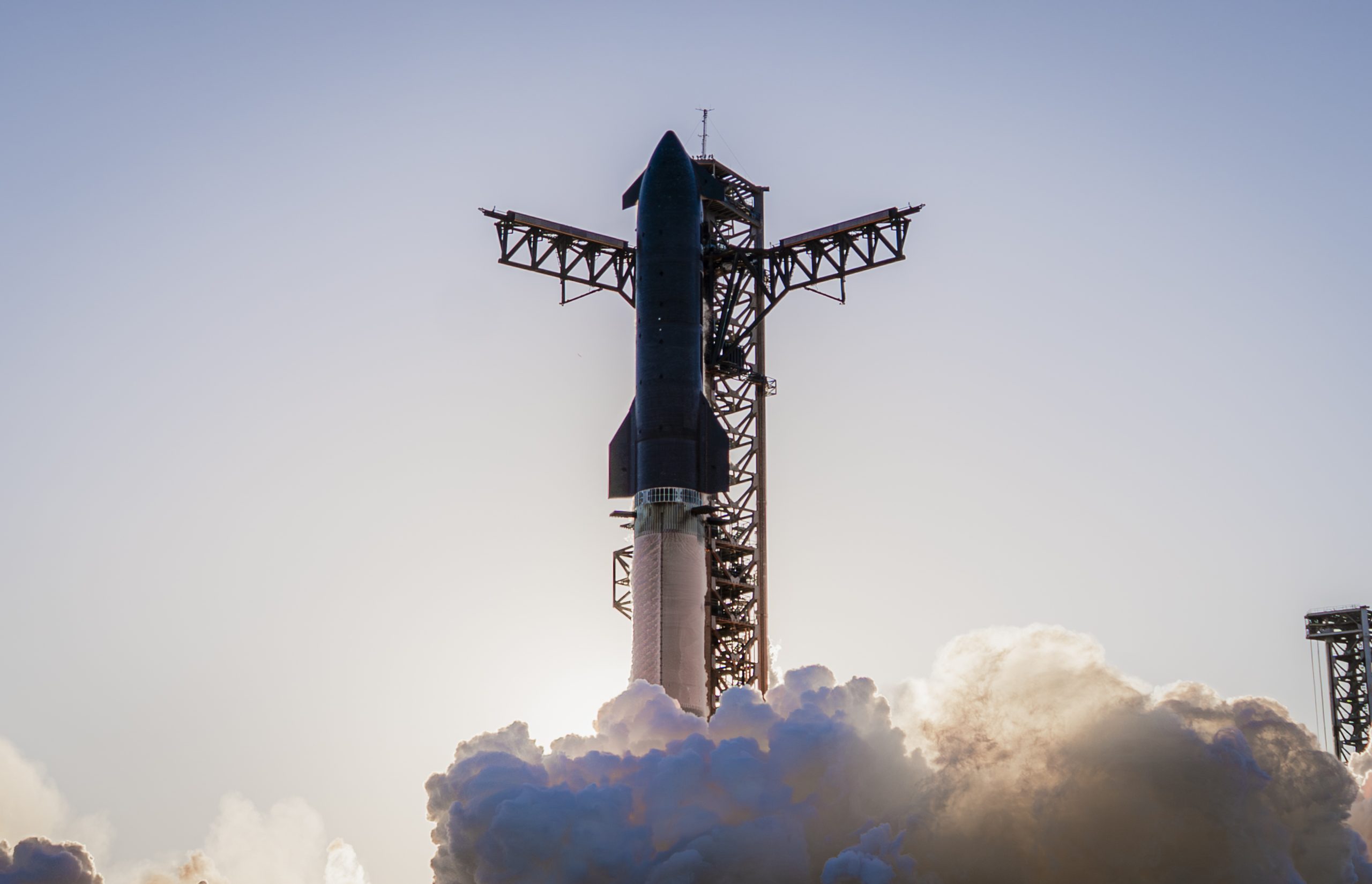

SpaceX
SpaceX CEO Elon Musk proposes Starship, Starlink tech for Solar System tour
SpaceX CEO Elon Musk has proposed an unusual approach to conducting a robotic survey of the Solar System’s major outer planets, asteroids, and comets, requiring a stripped-down Starship with a minimalist payload of Starlink satellites modified for interplanetary cruises and high-resolution cameras.
To enable this arrangement, it sounds like an expendable variant of Starship would have to be designed and built, cutting as much extraneous mass as possible to put as much energy as physically possible into its payloads. Outer planets – those lying beyond the Solar System’s main asteroid belt – are a minimum of 400 million miles (~650 million km) from Earth and stretch out to bodies like 2014 MU69 (below) at 4+ billion miles (6.8+ billion km) beyond Earth’s orbit. To travel those truly absurd distances, the time-to-destination can often be measured in decades, a timeframe that is physically impossible to shrink without hugely powerful rockets like BFR. Even then, SpaceX would face major hurdles to pull off Musk’s impromptu mission design.
New Horizons, the tiny but amazing spacecraft responsible for the first-ever close-up photos of Pluto and (more recently) the bizarre MU69 comet/asteroid, is perhaps the best categorical example of what Musk is proposing. Weighing less than 480 kg (1060 lb) and powered by a radioisotope generator (RTG), the spacecraft was launched in January 2006 and – after a single gravity assist around Jupiter – flew by Pluto a bit less than ten years later in July 2015, traveling a blistering ~13.8 km/s (8.6 mi/s).


Coincidentally, at least the first prototypes of SpaceX’s Starlink satellite constellation weighed around 400 kg (880 lb) during their March 2018 launch, just shy of New Horizons’ own dry mass. Major differences abound, however. Most notably, Starlink satellites will be powered by solar arrays optimized for energy generation at Earth’s distance from the sun, compared to New Horizons’ RTG reactor. At distances beyond Saturn, reliance on solar power would be an extraordinary challenge for any spacecraft hoping to do more than simply survive. For example, due to certain unforgiving laws of physics, New Horizons would receive – quite literally – 0.06% the solar energy per unit of area at Pluto.
To produce the scant ~300 Watts New Horizon receives from its nuclear power source, a single Starlink satellite would need a minimum of 1400 m^2 (~15,000 ft^2) of high-efficiency solar panels to survive and power a minimal suite of instruments and communications hardware. Assuming an extraordinary 170 g/m^2 solar array as proposed by Alta Devices, a Starlink satellite would need solar cells weighing no less than 250 kg (550 lb) total to operate at Pluto, a mass that absolutely does not factor in the complex mechanisms necessary to deploy a third of an acre of solar panels from an area of just a few cubic meters.
Frankly put, solar-powered exploration beyond the orbit of Jupiter and perhaps Saturn becomes almost inconceivably difficult. Further, the above numbers don’t even take into account each Starlink spacecraft’s electric thrusters, which would need several times more solar panels or massive batteries (themselves needing heaters) to operate at an optimal power level for long, uninterrupted periods of time, a necessity for electric propulsion. Several billion miles closer to the sun, in the main asteroid belt or around the gas giants Jupiter and Saturn, solar power is still extremely challenging but not impossible. NASA’s Juno spacecraft, the first solar-powered vehicle to visit the outer planets, 
At the end of the day, SpaceX’s Starlink satellites and Starship-based boost stage would need to undergo radical (and thus expensive) redesigns to accomplish such an ambitious ‘tour’ of the Outer Solar System, quite possibly also requiring the development and integration of wholly new technologies and exploration strategies to get off the ground. While the challenges are immense, the fact that Mr. Musk is already expressing interest in supporting such an exploratory, science-focused mission inspires confidence in the many future benefits that could soon be derived from Starlink and Starship, if successfully developed. Assuming missions that remain within the Inner Solar System, an exploration architecture as described by Musk is already readily doable and wouldn’t need the major modifications and leaps necessary for Outer Solar System ventures. Possible destinations where it could be practical include the Moon, Mars, Venus, the main asteroid belt (i.e. Ceres, Vesta, etc.), and many others.
If SpaceX can find a way to get both Starlink and Starship off the ground and into operational configurations, the future of space exploration – both human and robotic – could be extraordinarily bright.

Check out Teslarati’s Marketplace! We offer Tesla accessories, including for the Tesla Cybertruck and Tesla Model 3.

News
Tesla hints at Starlink integration with recent patent
“By employing polymer blends, some examples enable RF transmission from all the modules to satellites and other communication devices both inside and outside the vehicle.”

Tesla hinted at a potential Starlink internet terminal integration within its vehicles in a recent patent, which describes a vehicle roof assembly with integrated radio frequency (RF) transparency.
The patent, which is Pub. No U.S. 2025/0368267 describes a new vehicle roof that is made of RF-transparent polymer materials, allowing and “facilitating clear communication with external devices and satellites.”
Tesla believes that a new vehicle roof design, comprised of different materials than the standard metallic or glass elements used in cars today, would allow the company to integrate modern vehicular technologies, “particularly those requiring radio frequency transmission and reception.
Tesla has recently filed a US patent application on integrating RF transparent materials into the roof structure.
“facilitating clear communication with external devices and satellites”
Tesla fleet is getting @Starlink connectivity integration soon. LFG @Tesla @elonmusk… pic.twitter.com/bLa8YtPLd1
— Chansoo Byeon (@Chansoo) December 9, 2025
Instead of glass or metallic materials, Tesla says vehicles may benefit from high-strength polymer blends, such as Polycarbonate, Acrylonitrile Butadiene Styrene, or Acrylonitrile Styrene Acrylate.
These materials still provide ideal strength metrics for crashworthiness, stiffness for noise, vibration, and harshness control, and are compliant with head impact regulations.
They would also enable better performance with modern technologies, like internet terminals, which need an uninterrupted signal to satellites for maximum reception. Tesla writes in the patent:
“By employing polymer blends, some examples enable RF transmission from all the modules to satellites and other communication devices both inside and outside the vehicle.”

One of the challenges Tesla seems to be aware of with this type of roof design is the fact that it will still have to enable safety and keep that at the forefront of the design. As you can see in the illustration above, Tesla plans to use four layers to increase safety and rigidity, while also combating noise and vibration.
It notes in the patent that disclosed examples still meet the safety requirements outlined in the Federal Motor Vehicle Safety Standards (FMVSS).
Starlink integrated directly into Tesla vehicles would be a considerable advantage for owners. It would come with a handful of distinct advantages.
Initially, the inclusion of Starlink would completely eliminate cellular dead zones, something that is an issue, especially in rural areas. Starlink would provide connectivity in these remote regions and would ensure uninterrupted service during road trips and off-grid adventures.
It could also be a critical addition for Robotaxi, as it is crucial to have solid and reliable connectivity for remote monitoring and fleet management.
Starlink’s growing constellation, thanks to SpaceX’s routine and frequent launch schedule, will provide secure, stable, and reliable internet connectivity for Tesla vehicles.
Although many owners have already mounted Starlink Mini dishes under their glass roofs for a similar experience, it may be integrated directly into Teslas in the coming years, either as an upgrade or a standard feature.
Investor's Corner
SpaceX IPO is coming, CEO Elon Musk confirms
However, it appears Musk is ready for SpaceX to go public, as Ars Technica Senior Space Editor Eric Berger wrote an op-ed that indicated he thought SpaceX would go public soon. Musk replied, basically confirming it.

Elon Musk confirmed through a post on X that a SpaceX initial public offering (IPO) is on the way after hinting at it several times earlier this year.
It also comes one day after Bloomberg reported that SpaceX was aiming for a valuation of $1.5 trillion, adding that it wanted to raise $30 billion.
Musk has been transparent for most of the year that he wanted to try to figure out a way to get Tesla shareholders to invest in SpaceX, giving them access to the stock.
He has also recognized the issues of having a public stock, like litigation exposure, quarterly reporting pressures, and other inconveniences.
However, it appears Musk is ready for SpaceX to go public, as Ars Technica Senior Space Editor Eric Berger wrote an op-ed that indicated he thought SpaceX would go public soon.
Musk replied, basically confirming it:
As usual, Eric is accurate
— Elon Musk (@elonmusk) December 10, 2025
Berger believes the IPO would help support the need for $30 billion or more in capital needed to fund AI integration projects, such as space-based data centers and lunar satellite factories. Musk confirmed recently that SpaceX “will be doing” data centers in orbit.
AI appears to be a “key part” of SpaceX getting to Musk, Berger also wrote. When writing about whether or not Optimus is a viable project and product for the company, he says that none of that matters. Musk thinks it is, and that’s all that matters.
It seems like Musk has certainly mulled something this big for a very long time, and the idea of taking SpaceX public is not just likely; it is necessary for the company to get to Mars.
The details of when SpaceX will finally hit that public status are not known. Many of the reports that came out over the past few days indicate it would happen in 2026, so sooner rather than later.
But there are a lot of things on Musk’s plate early next year, especially with Cybercab production, the potential launch of Unsupervised Full Self-Driving, and the Roadster unveiling, all planned for Q1.
News
SpaceX reportedly mulling IPO, eyeing largest of all time: report
“I do want to try to figure out some way for Tesla shareholders to participate in SpaceX. I’ve been giving a lot of thought to how to give people access to SpaceX stock,” Musk said.

SpaceX is reportedly mulling an initial public offering, eyeing what would be the largest valuation at the time of availability of all time, a new report from Bloomberg said on Tuesday.
It is one of many reports involving one of Elon Musk’s companies and a massive market move, as this is not the first time we have seen reports of an IPO by SpaceX. Musk himself has also dispelled other reports in the past of a similar nature, including an xAI funding round.
SpaceX and Musk have yet to comment on the report. In the past, untrue reports were promptly replied to by the CEO; this has not yet gained any response, which is a good sign in terms of credibility.
However, he said just a few days ago that stories of this nature are inaccurate:
“There has been a lot of press claiming SpaceX is raising money at $800B, which is not accurate. SpaceX has been cash flow positive for many years and does periodic stock buybacks twice a year to provide liquidity for employees and investors. Valuation increments are a function of progress with Starship and Starlink and securing global direct-to-cell spectrum that greatly increases our addressable market. And one other thing that is arguably most significant by far.”
There has been a lot of press claiming @SpaceX is raising money at $800B, which is not accurate.
SpaceX has been cash flow positive for many years and does periodic stock buybacks twice a year to provide liquidity for employees and investors.
Valuation increments are a…
— Elon Musk (@elonmusk) December 6, 2025
Musk has discussed a potential IPO for SpaceX in recent months, as the November 6 shareholder meeting, as he commented on the “downsides” of having a public company, like litigation exposure, quarterly reporting pressures, and other inconveniences.
Nevertheless, Musk has also said he wants there to be a way for Tesla shareholders to get in on the action. At the meeting in early November, he said:
“I do want to try to figure out some way for Tesla shareholders to participate in SpaceX. I’ve been giving a lot of thought to how to give people access to SpaceX stock.”
Additionally, he added:
“Maybe at some point., SpaceX should become a public company despite all the downsides of being public.”
Musk has been historically reluctant to take SpaceX public, at times stating it could become a barrier to colonizing Mars. That does not mean it will not happen.
Bloomberg’s report cites multiple unidentified sources who are familiar with the matter. They indicate to the publication that SpaceX wants to go public in mid-to-late 2026, and it wants to raise $30 billion at a valuation of around $1.5 trillion.
This is not the first time SpaceX has discussed an IPO; we reported on it nine years ago. We hope it is true, as the community has spoken for a long time about having access to SpaceX stock. Legendary investor Ron Baron is one of the lucky few to be a SpaceX investor, and said it, along with Tesla, is a “lifetime investment.”
Tesla bull Ron Baron reveals $100M SpaceX investment, sees 3-5x return on TSLA
The primary driver of SpaceX’s value is Starlink, the company’s satellite internet service. Starlink contributes 60-70 percent of SpaceX’s revenue, meaning it is the primary value engine. Launch services, like Falcon 9 contracts, and the development of Starship, also play supporting roles.








